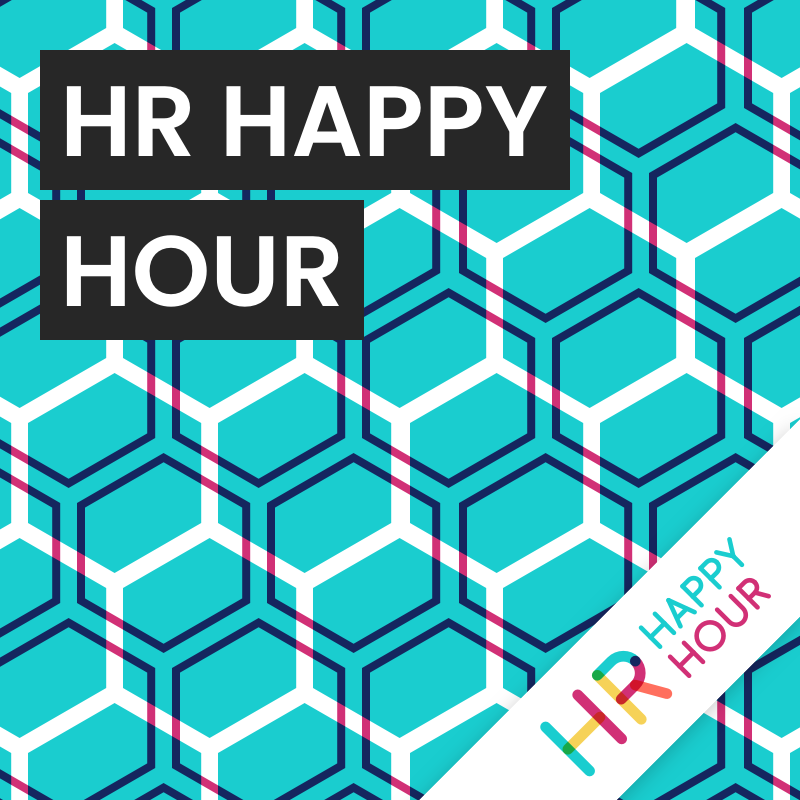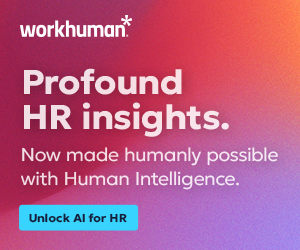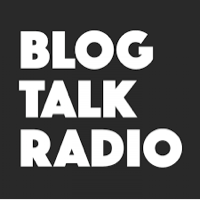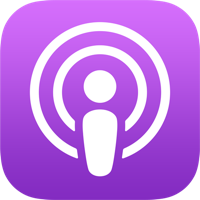Mental Health in the ‘Next Normal’ of Work: 2022 Trends Forecast
Hosted by

Steve Boese
Co-Founder and Chief Data Officer of H3 HR Advisors and Program Chair, HR Technology Conference

Trish Steed
Co- Founder and Chief Strategy Officer, H3 HR Advisors
About this episode
Episode 514 – Mental Health in the ‘Next Normal’ of Work: 2022 Trends Forecast, featuring Lyra Health
Hosts: Steve Boese, Trish Steed, Lara Gossman
This episode of the HR Happy Hour is brought to you by Paychex, one of the leading providers of HR, payroll, retirement, and software solutions for businesses of all sizes.
Financial capital has long been established as a key driver of business performance, but today, business leaders are increasingly recognizing the importance of their human capital in driving success. Download Paychex’s latest guide to discover why breaking down the silos between HR and finance can result in better business strategy and growth, as well as 14 simple HR metrics your teams should be tracking, and why.
To download the e-book, visit payx.me/FDMresearch.
This week, we met with Lara Gossman from Lyra Health to discuss the 2022 Workplace Mental Health Trends Forecast Report. This was a deep dive into what’s happening with employee mental health in the workplace, and how employers can best respond to the ongoing mental health challenges.
– Factors that are driving employers to prioritize mental health
– Importance of benefits an organization can offer to their employees
– Summary of the labor market and how it relates to mental health
– How providing learning and education to leaders can help them prioritize, audit, and delegate responsibilities
– Does your organization’s policies and overall culture prevent or add to employee burnout?
Thank you, Lara, for joining the show today! Remember to subscribe to the HR Happy Hour wherever you get your podcasts.
Steve 0:30
Hi, this is Steve Boese and welcome to a special edition of the HR Happy Hour Show. In December of 21, Trish Steed and I partnered with Lyra health and Lara Gossman from Lyra health to do a webinar on the Lyra health 2021 Workplace Mental Health Trends Forecast Report, a deep dive into what’s happening with employee mental health in the workplace, and how employers can best respond to the ongoing mental health challenges of their workforces. The webinar was great, it was informative, it was very conversational much like this podcast, so we thought we’d run the audio as a podcast on the HR Happy Hour Show in early 2022. To help you and your organization best meet these mental health challenges. And as always, this episode of The HR Happy Hour is brought to you by Paychex one of the leading providers of HR, payroll, retirement and insurance solutions for businesses of all sizes. Financial capital has long been established as a key driver of business performance. But today, business leaders are increasingly recognizing the importance of their human capital and driving success. Download Paychex latest guide to discover why breaking down the silos between HR and finance can result in better business strategy and growth, as well as 14 Simple HR metrics your team should be tracking and why. To download this eBook, visit payx.me/fdmresearch. Alright, thanks again to our friends at Paychex and to our friends at Lyra health. We hope you enjoy this episode of the HR Happy Hour Show.
Lara Gossman 1:56
Well, thank you everybody for joining. I’m really excited to dig in today. As mentioned, today, we’re really going to be digging into the results of our 2022 workforce mental health trends forecast feels surprising even for me to say that it’s been nearly two years since the start of the pandemic. And I think that we can all agree that the way of working has changed. Specific to the new normal as it relates to workforce mental health, we’re seeing some pretty big changes, both in the ways that companies are addressing the need of their employees, but also the evolving expectations that we’re hearing direct from employees, really what they’re thinking that their employers, you know, should be providing to them. So today we’re going to take a look at some of the top trends related to workforce mental health, we’re going to start to make some predictions about based on our conversations with employers what we anticipate going into the next year, and many of the trends and predictions that we’ll be speaking to our results of a new survey that we conducted, including over 1000 full time employees and 300, employee benefits leaders across the United States. I think you’ll note that Trish, Steve and I are all incredibly passionate about what we’re speaking today. And really, as we were preparing for this conversation, I wanted it to just be that an active conversation and dialogue. And so I would encourage you throughout the conversation today, if you have questions, or anything that you want to add to the conversation, you’ll see the questions panel on the go to webinar screen. So feel free to leverage that we’ll certainly be able to address questions throughout, as well as have some time for q&a at the end of the presentation. And then final piece of housekeeping to note is just if you are looking for a recording of this conversation, that’s something that we’ll be sharing out as well as the full 2022 trends forecast will be sent to you as a report as follow up to this presentation today.
Lara Gossman 3:52
So thank you again, so much for joining. I would love to start really, you know, Trish and Steve, on the topic, a quite hot one these days of the Great Resignation, or some refer to it as the great real reshuffle, that certainly the way that we’ve been thinking about it, obviously top of mind for us here was just understanding when it comes to mental health, you know, what are the factors that are attracting and important in terms of retaining key talent? You know, the the few things that jumped out to me personally, as we were reviewing our trends report is that 84% of employers said it was at least somewhat important to them when evaluating a prospective employer that they’re offering mental health benefits. And if you look at that same data point from just a year before, it was only 70% So up quite a bit. Furthermore, you know, more than half so about 54% of employees said that they would consider staying at their current employer because it offers mental health benefits. So a few things that certainly jumped out to me. We’re seeing You know that the vast majority of employers are prioritizing mental health, not just as we go into 2022, but they identify it as a key need over the next three years. So just curious, maybe Trish, you can start us off today, you know, do from your point of view, are these factors? Are there driving, you know, that are driving employees the same for employers in terms of prioritizing mental health? Any thoughts you can share today?
Trish 5:27
You know, thank you. That is a great question. And I’m glad you shared some of the stats from the report, because I think it really hits home, that it’s such a different time. You know, we, we know that a pandemic is going to bring a lot of negatives, of course, but I think one of the most positive things to come out of it is, for the first time, you’re starting to see employers and employees on the same page. When I think back over the 20 years, where I was an HR leader, I could probably count, on one hand, the number of people that truly came to me and even resources and said, I need help real mental health, right. And whether that was stress from, you know, something at work or personal, whether they were having anxiety, depression, maybe something more serious. Again, people did not feel comfortable identifying that as an issue at work, right. And then over the next decade or so, we started telling people to bring your whole self to work, right. We wanted them to be encouraged, but yet there was still such a hesitancy. So I think that when you’re looking at the results that you were just sharing, what we’re seeing is that we are now all facing anxiety, we are all facing, you know, whether whether it’s your you know, different races, different ethnicities, different job levels, different industries, right, across the board, we have a lot of concerns that are very similar. So to me, that’s such a good foundation that we can start building this conversation from. And while it might be uncomfortable for for quite a while, and I know we’re going to dig in on that a little bit later, but I think it’s at least a good starting point for us. And I know, Steve, I think you’ve probably seen that too. But Laura, I know, from a company perspective, you see so many companies that are trying to gauge that level of mental health needs, what what kind of things are you seeing from your clients?
Lara Gossman 7:25
Trish, that is a great question. And it’s a question I’ve been asking a lot, obviously. Many of our employers are getting ready for any new benefits that they’re putting in place for January. And so I often ask why now, why are we prioritizing mental health now? And so I’ll just kind of highlight two key trends that we’ve been hearing from employers. One is, as they’re reflecting on both medical and pharmaceutical send, been seeing a steady uptick over the last several years, potentially, not surprisingly, and the behavioral space, but not a lot of transparency into how do you help people sooner in their journey? How do we provide tools earlier. And so that’s oftentimes kind of a conversation as they might have the dollar amount or the utilization amount tied to claims, but not much additional insight from there. And truly, as it relates to our people in care really getting better. And so that’s a conversation that oftentimes, they’re they’re looking into, you know, with partners like us, I think the other thing and you hit on this, Trish, well is that I hear from employers all the time that the just the narrative around mental health is changing. You spoke so cleanly about the fact that several years ago, employees wouldn’t stop into a manager’s office or an HR leaders office and vocalize what they need. But I think even outside of the employer space, if we look at the French Open as the example, if we look at the Tokyo Olympics, I think just globally, the narrative around mental health is changing. And so is that dialogue in the workplace. And so there’s a couple of different ways our employers are kind of gauging the needs within their populations. Oftentimes, we hear that there are just more phone calls and emails and escalations into the HR and benefits teams. But for employer partners that are doing regular workplace surveys, they’re also kind of reporting that there’s quite an edtech, and just what they’re hearing in terms of need and expectation of the employers to really kind of support in that category. So Steve, I know that you’ve got a passion for looking kind of at the more macro level on impacts to the labor market. I’m just curious, from your perspective, you know, as we think about a stronger well being at the organizational level, how does that tie back to some of the things that you’re seeing?
Steve 9:40
Yes, thank you Laura. I love an opportunity to talk about the labor market. And while we would like to think that an employer support of their employees mental health is just, we shouldn’t have to have an a reason to do that. It should just be the thing we do the right thing to do. Sadly, that’s probably not true everywhere, probably certainly wasn’t true prior to the pandemic, when I’d argue that mental health in the workplace was an issue, prior to the last couple of years, probably a more serious issue than we all wanted to even admit, I think certainly now we’re much further down the line right of admitting that I, I was doing a little research for this webinar, and for something else I’m working on, was kind of looking at the timeline of 2020 and 2021. Basically, what what was happening in the world and in the news over the last two years, and I’m shocked that not everyone is, you know, experiencing anxiety and stress and burnout, if you just look at, put one highlight from every month, that’s the last two years and you think, Oh, my gosh, you know, this has been the most trying two years, maybe of all our lives. So having said all that, though, every organizational opportunity, decision, decision to invest, etc, exists inside a context, which I believe generally speaking is the context of our, our workplaces and our labor market. And this, in addition to being the most crazy couple of years in our lives, this is the craziest labor market probably ever, as well. And I’ll just throw out a few couple data points that maybe you’re familiar with, but it’s good to hear them quickly. And in a row, right for that context.
Steve 11:13
In the United States in November, the unemployment rate was 4.2%. Right? That is just a few ticks off the all time low. The pre pandemic rate is three and a half percent. That was a generational low level, that was a 60 year unemployment, low level. And October, there were about 11 million open jobs in the United States. That’s about 400,000, short of the all time high of open jobs in the United States, which was set just a couple of months prior to that there are only about 7 million people officially unemployed, which means there’s a lot more open jobs than officially unemployed people to fill those jobs. And then Unemployment Claims write weekly unemployment claims when the pandemic first hit, and the first wave of closures came. There were six and a half million initial unemployment claims like and then the next week, there were six, nine and then we got through that was four and a half million right. The first week of December, the last piece of data I had before this webinar 184,800 84,000 Which still sure that’s lower than it was in all the months prior to the pandemic like a yearly average, right. Finally, last one, and I’ll stop on labor market stuff. I know this is a Mental Health Webinar. 4.2 million people voluntarily quit their jobs in October in the United States, marking the fourth consecutive months of 4 million people voluntarily leaving their jobs that is historically high. Never been that high. All told them in that 32 million quits since March. So what does that all add up to? Probably the most challenging labor market that any HR professional any leader any organization’s ever experienced, right? We’ve all seen 50 million stories, right? In the last three months or so about no one wants to work, I can’t hire anybody. Places closing down dining rooms and doing takeout only, etc, etc. Right or reducing hours because they can’t find people to work. One of the Levers organizations certainly has is improving the way they care about their employees. And certainly one way is with mental health benefits programs and just being interested and providing employees opportunities to not just improve their mental health, just manage it right and take care of themselves.
Steve 13:24
You mentioned Lara, that the data shows that many many more people are considering mental health benefits as they consider new job opportunities or staying at a job. Right? There’s every survey says the same thing. The litter survey said it calm for business surveys at 76% of employees consider mental health benefits. When evaluating a new jobs a new survey from our friends at paychecks said the same thing. Each on benefits leaders have a tremendous opportunity for more creative differentiation. What most HR Trish, I’m gonna pick on you a little bit. But what HR people do, right, what business leaders do when they can’t find people and they can’t retain people, they pull the expected levers, right, raise minimum and are starting cash sign on bonuses, maybe offer a little bit more PTO, maybe I don’t know, more perks, right, put in the pool table, right? All that all those cliches, everybody can do those same things, and everybody tries them. And they’re very short term things that you can do to try to improve your ability to attract and retain talent.
Steve 14:30
I think emphasizing employee mental health, both from a cultural level, which we’re going to talk about as well as a practical level with with programs and resources are is one way maybe maybe the best way right now for employers to compete for talent, a really tough market. So that’s my speech on the labor market. That’s that if you need justification for making investments in this area, just look at your open jobs and how long it’s taking to fill them and look at the turnover you’re seeing in your organization. Right. So that that’s that’s the labor context. But inside that context, there’s another big issue that’s happening too, right? We’ve seen over the last couple years and even before, I’d argue, which is burnout, right? Employees stress, burnout overwork, whatever term you want to use to describe it. In the lira survey, 32% of employees said they’d experienced burnout in the previous year. From a from a variety of factors. It seems to be a growing recognition of burnout is a real thing. It’s become an identified behavioral condition, right? We you know, that you can sort of diagnose, but addressing burnout can be tough. Lara, you work with a lot of organizations, what are some of the ways that they can try to approach burnout as an issue and maybe address it?
Lara Gossman 15:47
Yeah, it’s a great question. Steve, we spend a lot of time talking about that. Obviously, it’s a growing concern. And you spoke to many of the data points around well, I don’t think I have to spend much time substantiating that burnout is a challenge that we’re seeing, you know, across all of our customers, but we always encourage people to start small and make incremental changes. Those are really the things that can make an lasting impact on that workforces culture. A big thing, and maybe this is an obvious one, but it’s such a human one human one is how do we make work meaningful? And that’s something that’s a leadership responsibility at the highest levels down to you know, somebody who has one or two more reports, how do we tie the work and tasks the individual do on a daily basis into the greater mission, we find that that’s a really effective and quite frankly, easy way to start to make an impact in the work that people are doing. You know, we chat a lot around the role that managers play and people leaders play. We spend a lot of time working with employers around how do we provide learning and education for people leaders. And it’s as simple as you know, in one on ones or team meetings, is a manager spending time to really do an audit of the work and responsibilities that an individual has on their plate. And really hoping to model how do we prioritize? How do we delegate? I think that’s so important.
Lara Gossman 17:07
You had several data points, Steve, around just open positions, I think all of us can take a look at our open job boards and understand that it could be really easy to push together a couple different roles and responsibilities into one individual in the meantime, but I think just to be really kind of head of the trend of employees leaving how do we be thoughtful about role clarity and role overload. So that’s something that we talk a lot about just developing people, leaders in order to have that conversation. And I think the last thing that I’ll kind of just highlight is we talk about the new normal, or the next normal, but let’s just be really honest, that nothing is that normal right now. And so how, you know, whether it’s HR team, people, leaders, or senior leadership, how do you lead by example, you know, taking breaks, I think many of us, we were just chatting about my dog in the other room, right? Like we’re working at home, we’re living at home, we’re parenting at home. And so how do we model that? Well, we’ve talked a lot today around just opening the dialogue around mental health within the workplace. And so being a leader that kind of models that where you can, leveraging PTO, you know, even if that’s an at home staycation with a Netflix binge, like how do we model these things for our population, I think that’s really something important for us to be thinking about as it relates to, you know, just helping to prevent workplace burnout. Trish, though, I’d love to throw it over to you around just from an organizational policy perspective. You know, are there things that you’ve been thinking about talking about, with employers around just kind of lowering that overall risk?
Trish 18:48
Yeah, no, that’s a great question. I love that. I just love that you were talking about an audit, because we’re doing this conversation, right? We didn’t plan this out. But one of the things that I loved when I was in human resources was being able to have really concrete things I could take back to my organization and try. So definitely having those audits of the workload, what is necessary, what isn’t having the discussions, as you mentioned, modeling the behavior. Those are all super, super good examples. I think from a policy perspective, you should approach it the same way. I would do an audit of your policies. This is something that HR professionals do often at the end of the year beginning of the calendar year anyway, are you should but I think that when you look at a policy, you know, handbook or online, however you keep those nowadays, it’s it’s something that’s usually additive, right? We constantly are telling people what not to do, right? Don’t wear this, don’t wear that. Don’t do this. Don’t do that. Right? I would challenge everyone who’s who’s listening today or who might be listening on replay to really do an audit of your policies and what the specific ones up.
Trish 19:58
Does this policy help my leaders or my employees have the flexibility to not be burnt out. If it’s something that hinders their ability to get work done in a timely manner, or to focus somewhere that they really shouldn’t be focused on, which is maybe a way from mental health, and having an awareness there, I would challenge you first start there, review some of those policies, rewrite them, get some of the old ones out. Second step is then start thinking about what policies that are very positive, can you put into play, and I know it was Steve, I’m gonna throw it to you on culture, because you’re such a culture guy. But before you get into the culture of an organization changing, put some some measurable policies that are in play, so that people see if I change these behaviors, if I buy, take that staycation, and publicly share that with my team, right, that I’m not going to be penalized for that. Because again, policies tend to be more about penalizing employees. So I’d say flip the script. Think about that. The next thing I just wanted to say to you, before we really dig in the culture side of it is you all and Laura, I know, you know, this is a liberal health, you had the report, how managers can prevent employee burnout. So acknowledging emotions was big in that report. And then having connection, meaningful connection that you take time to cultivate were two of the things just to but there are a ton more in there. So I would say, you know, from a practical, practical perspective, make sure you’ve got a little checklist for yourself, if you’re an HR, maybe your business leader, I’m going to review the policies, I’m going to put in a few that are going to be very proactive. And then I’m going to look at some substantial ways that we can make contributions to connection in the coming year. But Steve, I mean, what about for you? I mean, obviously culture? Isn’t that, you know, out of this discussion, right?
Steve 22:03
Yeah. And I love and hate talking about culture. Because one, it’s I know, it’s important. But I also know, it’s very difficult to define, it’s very difficult to describe, it’s very difficult to manage, and I don’t think on its own, it actually is all that meaningful, because because what culture really is, to me is, it’s it’s just a summation, right? A collection of physical, tangible, actionable, real things that we can understand. And we can measure and we can experience right. So I like to think more about things like, Well, how do people communicate at work? What what are the mechanisms? What are the expectations? How are our projects and tasks? The actual work? How is it managed? How is it assigned? How is it reviewed? How is it measured? What behaviors are rewarded or encouraged and which ones are discouraged? Perhaps even subject to some kind of you know, disciplinary activity. And and then even things like every organization right in the world, probably talking about making a commitment to improve diversity, equity inclusion, okay, great. You can make a make that statement or you’re actually doing, what are we actually doing to improve those things? And how are we actually holding ourselves accountable as an organization to make those kinds of improvements? That to me, is what we’re really talking about, and other things too. But when we talk about culture, before work from home, and distributed work was the thing like a big thing right before the pandemic I was, I used to tell the story about you could tell everything you wanted to know about an organization’s culture, by going to your IT folks and examining email traffic from 6pm, on Friday, to whatever midnight on Sunday, something like that, whatever you call the weekend, right? Examine email traffic, who sent the volume of emails, who’s sending them who’s replying to them? How quickly? Are they replying to him, etc, etc.
Steve 23:46
Now, you’d have to expand that to include things like texting and slack and teams, and they’ll all the other 10,000 ways we have to communicate with each other at work. And then you can understand what that culture of that organization was really like, at least from a perspective of kind of how we can how we think about work versus how we think about not work. Burnout is a very serious thing, right? And I’m surprised even the percentage that have reported they’re experiencing signs of burnout, there’s not even higher, right, I’ll bet if we ask again in three months, right, as as, as year three, the pandemic kind of starts, that those numbers won’t go higher. So certainly things like workload, right. Laurie, you mentioned this, right? There’s so many open jobs, organizations are trying to do more with less, they’re short, they’re trying to still serve their customers, often with fewer people, people working longer hours, people are working like crazy, right? The people who are working right now because there’s so many open jobs to fill, and there’s so much pent up demand and a lot of areas of the economy. Autonomy, or lack of control contributes to burnout certainly, right. Not only do I have some some agency over what I’m doing, but how I’m doing it perhaps even where I’m doing it. Do I have control to make decisions do I influence Over the things that impact my, my working life, or do I not? Or am I just someone who’s got to kind of just take orders and listen, and if I fall a little bit out of line there, that’s going to be a problem that can contribute over a sustained period of time to burning out and not being rewarded, and maybe being treated fairly right in my mind, right for all this work that I’m doing? Or do I feel like I’m being valued by my organization, both by my managers and my peers? Right? Do I feel like I’m contributing, both meaningfully in a way that I can understand? And does it resonate with me? I mentioned earlier, right.
Steve 25:34
And the response to a tight labor market is often just raise wages, improve benefits, right, give sign on bonuses, you probably still have to do those things, certainly. But again, I don’t think that’s enough, right? Because you hit a point where you can probably most organizations, right, you don’t have an unlimited salary budget, or bonus budget, there comes a point where some other employer out there can do a little better than you. And we see these stories all the time, especially on the small business market, right? Where a big, big multinational company has a lot more power over those kinds of decisions than then smaller organizations do. So what can organizations do to compete a little bit more fairly? And the last thing I mentioned, too, and this has been challenging, I think, in the work from home extended year, especially for organizations who’ve been either able to do that, or been forced to do that is connection and community and relationships, right? We’ve seen a lot of stories about how, when you see CEO, XYZ, come on, on the business uses, hi, we really need everybody back in the office, right? Because that’s how people get to know each other, they get to collaborate with each other, they learn about the culture, quote, unquote, together, etc. And I always kind of like, no, no, I think that just sounds like some boss who wants people there where they can see them. And I think there’s some element to that. But I also think there’s a little bit of element of truth to that as well. I think now, a couple years into this, I think relationships at work, I just think they’ve bound to have suffered somewhat, right, it has been more difficult to maintain those kinds of quality relationships, even friendships, right? The data over the years, it’s clearly shown, if you have a quote, unquote, best friend at work, you’re going to be much more engaged in your work, you’re going to be more happier with your work, you’re going to be much more likely to stay with the organization longer term, creating those kinds of friendships, especially for people who are newly been introduced to organizations, right, in this extended work from home era. I think that’s really, really challenging as well. So to me, for organizations and for HR people, specifically, burnout and the sources of burnout are all over and I think the the pandemic, both internal to workplaces and then the external what’s happening in people’s lives have exacerbated those problems to the point where if you’re not really looking to address this in an organization, I think, I think you’re gonna you’re gonna really run into a problem with with attracting and certainly retaining talent in 2022.
Trish 27:55
Yeah, Steve, you know, she said so much that I think I’m nodding and nodding, right, it resonates? I think it’s talking about return to to work into the workplace. One of the things I heard not too long ago was someone referred to it as you’re returning to employees. So we often want to return to work, if you do have that relationship at work, right? If you do have a best friend at work, people that you’ve met people that you want to be in connection with, right? So part of it is definitely returning to the work you do. It has to be interesting and challenging and stimulating and all those things, you have to feel valued. You do have to have those relationships. So I just, I think it’s interesting that we’re kind of even in this last 18 to 24 months, moving a little bit off of this, return to the new normal, right or return to work or even workplace.
Steve 28:44
There’s nothing normal about what’s going on anywhere.
Trish 28:54
But isn’t it kind of refreshing now to be able to shed that I think and be thinking about the human aspect of it. And I think that was the point of us having this conversation today was what we’re missing when we were at work before with people we might have liked, enjoyed, were challenged by whatever. We were missing some of that, that comfort and being able to share fully who we are, even though we were giving lip service to it, right. Bring your whole self to work be sharing who you are and what your needs are. Right. We still weren’t there. I think that’s the flip. Right? I think we’re starting to see I’ve pulled up some information actually from the the lira health report. It said currently 56% of people would feel uncomfortable speaking about their mental health to a non HR leader in their company. That’s still a really high number. However, I think it’s that’s much lower than what we would have seen even two years ago though, because we are seeing that shift of empathy, care concern realism from our leaders. So I do feel like it’s starting to move. And, Lara, I know that, we’ve known for years that companies are sort of working on any mental health stigmas that happen. But we’ve always, even myself been guilty of kind of focusing on things that are easier to address, right? Anxiety, depression. And not that those are I don’t imply that they’re easy, but things that are easier to talk about and more acceptable to talk about. With more people actually being away longer or being isolated longer and having more acute and complex mental health challenges, such as severe depression, PTSD, right, as people are coming back out into the world. I’ve just recently ran into someone who was actually having quite a bit of that. Even substance abuse, right, kind of joked early on, people were drinking a lot of wine, having more drinks at home, it’s now far enough, and it’s created a problem. So my question for you would be what are you seeing some of the employers doing today to handle maybe the more complex issues versus what we were maybe having visibility into before?
Lara Gossman 31:15
Yeah, it’s a great question, Trish, it’s certainly been a topic we’ve been chatting a ton with employers about. And you touched on all the different data points around why but you know, as we look across the clients that we serve our clinicians that identify that over 5%, so 5.2% of all members have more serious mental health conditions. And not to say that, as you talk to, you know, obviously, more severe depression, suicidal ideation, substance use, and alcohol use disorders. Eating Disorders, certainly have always been a piece of the spectrum. But I think just with the continued dialogue, and all the compounding factors that we just spoke to of the very not normal normal that we’re in, I don’t think employers can afford at this point to not prioritize a strategy. In that case, you know, a few data points that I’ll just highlight that we talk a lot about when it comes to, I often position this with employers about the moments that matter most. And I think that’s across the entire mental health continuum. But very specifically, when you look at individuals with the most acute needs, navigating the existing system is just really difficult. You know, less than 1% of beds at most facilities are available at any point in time. So again, we just spoke to that need, you know, 5% of folks and client and care that less than 1% of bed availability. Not all facilities are practicing evidence based care. So I think the the most recent numbers that come from the Substance Abuse and Mental Health Services Administration is that only 58% of residential facilities are offering cognitive behavioral therapy 31%, only 31% are offering Dialectical Behavioral Therapy, these are really the gold standards for evidence based cares. And there’s also a ton of just variability in price for these different facilities.
Lara Gossman 33:10
And so again, as you kind of just highlight, why now, are employers thinking about this? Again, I just I think we have to be thinking about supporting those individuals who have the most dire needs. And then the other challenges that wraparound we talked a lot today about the human component, the individual’s family and community and support network. So it’s not uncommon that a given family member is admitted into a residential facility that there’s little to no psychoeducation for the family and community member. Well, think about that family and community member being an employee of you, who has day to day responsibilities at work, how can you expect that to show up and be present? And so, you know, I think as we partner with employers, we would be remiss to not talk about acute more complex care needs, and to offer options for navigating unfortunately, oftentimes, in my experience, these are the calls that come into the HR team, for either an employee in crisis manager who’s identified someone in Crisis or family member that’s in crisis. And so we really, you know, endeavor to be an extension of our teams in finding high quality care, you know, helping that individual get into care. And then I think, really that psychoeducation for the family and community. And we talked about that in a couple different levels today around, you know, certainly the narrative is shifting. But you spoke to the data point, only about half of people are really even comfortable yet speaking to more minor mental health complex issues. And so how do we empower people, leaders, empower managers provide education that’s not at the individual level, but really is across the entire organization. And I think it really just starts with a commitment from the executive leadership team, the HR team, to addressing those hard conversations. So there’s a level of comfort, you know, when those more complex needs to show up?
Trish 35:03
Yeah, I agree with all of that. I was thinking too, I was making some notes as you were talking, I hadn’t really spent a lot of time considering when you talked about, it might not be the employee, it might be their loved one who is needing help, and maybe getting it or not getting it. And they don’t know how to deal with that. So, again, I’m just thinking back in my career, I can’t think of a time someone has come to me and said, my spouse, child, someone is struggling, and I need help. Right. So gosh, we should be thinking of that aspect, too. One of the things that popped to mind as we were kind of planning talking today was I thought about I have twins that are seniors in high school. And you know, a lot of schools have sort of if you see something, say something right, you can report anonymously. I haven’t really worked in workplaces either, where there’s a lot of that going on around mental health. So I just be interested in either one of you, kind of your perspective, maybe on that, like, do you think that that would be a valuable way that people could start to have those conversations? Maybe because if you don’t know how to fix something, maybe if you at least bring it to human resources, or bring it to your boss, that you’re concerned for your colleague? And maybe you’re uncomfortable talking to them directly? Because you don’t feel equipped? Yeah, neither of you maybe thought through that at all? Or had that happen with, you know, people you’re dealing with?
Lara Gossman 36:30
I’m happy to jump in briefly Trish, and certainly pass it on to Steve. But one of the most popular things we do with our partners is psychoeducation that we refer to as no one response, you know, how do you recognize signs and symptoms that somebody on your team is potentially struggling with a mental health? How do you even approach that conversation with empathy to open the door, and I think just the intentionality that our employer partners really have put in place to start that dialogue to make and equip individuals with the tools to start that conversation has been so meaningful. So I think, you know, it can start in a lot of different ways, whether it’s circulating, you know, resources frequently around, just educating people to those signs and symptoms D stigmatizing mental health. You know, that’s certainly a topic we’ve spoken on today, and creating kind of that open door. So that, like you said, if somebody is recognizing something, maybe that no one else in the organization can see, how do we create a path for someone to access care or resources when they need the most?
Steve 37:37
Yeah, that’s a great point. I think it’s making me think about sort of two things here, which is kind of they’re related, right. And I think the lire study draws attention to these issues to help organizations better manage these challenges. One is education, as you’re talking about law, and helping people sort of understand the signs and then trace you’re talking about, have given them this mechanism, what to do, right what how to take action when they see signs, right. Because, you know, we’ve probably all in different workplaces, in our lives, maybe suspected things like this, when we’re working with colleagues or peers, or as managers with people, you’re seeing people who are, all of a sudden starting to behave a little bit differently, or their their mood is changing wildly, or their performance even is just varying right from whatever standard they had set before. And certainly tangible things like irritability and calling out and maybe you know, forgetting to shave, or I do that a lot too. But forgetting the normal world, forgetting to shave for three weeks and being out sick, etc, etc. Just just, you know, in our personal lives, we probably are more prone to see this with people that we know better, maybe less so at work, right? Where we we feel like we know people, but maybe not as well. But you when you look at someone’s boy, something’s just something’s troubling them. I can tell. Right? So what can we do? And what resources do we have?
Steve 38:59
And I think part of this conversation organizations need to have is, is with that, honestly, so much pressure and challenge. And stress gets put on that that first line manager level, but it’s really true, right? That first line manager has a lot of influence over an employee’s experience in the organization good or bad, right? We’ve heard that phrase for 100 years, right? People don’t quit companies, they leave managers, etc, etc. I don’t know if that’s really true or not. But I think there’s enough truth to it, to really stress the important role of managers and maybe, you know, being more deliberate and intentional about how we provide those resources that you guys have mentioned to that frontline manager team and maybe really even doing it you know, once per once per every six months or so, do a very intentional managerial team. This is something we want you to learn about and not just to spot the signals or the signs that something might be amiss with someone, but also to make sure they really understand whatever set of resources that that are available. to them either through their health plans through a dedicated mental health benefit through an EAP. Whatever the organization is getting, make sure managers understand that how to communicate that how to help employees navigate it, right? Because it can be tricky, as you mentioned.
Trish 40:12
Well, it’s tricky, too, because I think there’s such a stigma that goes along with sort of self disclosure, or trying to identify someone else if you don’t feel equipped. I mean, Lara, I would throw it to you. Obviously, you all are doing the research on this. I mean, what about I mean, again, I’m a Gen X, or I’ve been in the workforce a long time, even I in you and Steve and I are business partners. I think this is the first year I’ve ever told him truly, like, I’m having a day where I can’t today, I just, you know, like, I feel like, it’s the first time feeling safe enough to even have that conversation with someone I’ve known for years. What about people in the workplace who might not feel that they have such a stigma? They’re being repercussions?
Lara Gossman 40:57
Yes, and I think, you know, as it relates to stigma, I like to always bring the conversation back to the comfort that most people have checking in on on physical health. So for example, I just recovered for a poll, that was pretty obvious to my team, as I was coughing and coughing less than in hopes checking in. Um, but that’s the language that we’ve learned, right? The ability of when to check in with folks. And I think, when it comes to D, stigmatizing around the population of how do we check in with mental health, it really comes back to me around how do we create mental health literacy, education, provide resources, the same way that all of our other learning and development tracks exist for individuals within your population so that we can create that same language and comfort in really addressing those topics. And so, you know, I like to parallel it to a cold or another physical health condition, because I think for people, it’s really easy to wrap your head around. Oh, Steve was sick last week, of course, I’m going to check in and see how he’s doing. But Steve was late for several meetings. And Steve hasn’t shaved in weeks. And now I’m concerned, what is what is the language? What is the way that I check in? And so I think it really does come back to, in my opinion, really having it be a top priority of teams to create education, and to help provide that language because we don’t have we don’t have it today. It’s not something that many of us grew up in schools, learning to check in on, you know, and so I think really, just kind of flexing the team to distraction that way to consider it a top priority is something that I think is just so important. And I’ll see if there’s anything to add from here.
Steve 42:38
I think I agree, certainly. And I think it’s like a lot of other things in workplaces, or even just society in general, the more we talk about it, the less strange it becomes. And the overtime, the less stigmatized it largely will become as well. And I think that emphasizing organizationally that mental health challenges, behavioral health challenges are not really any different, right than physical challenges, like your cold, like carpal tunnel syndrome or workplace, you know, injury, right of some kind, right, where someone’s got to go out for a while and maybe get some rehab and or maybe need some sort of accommodation really to come back to work. We don’t worry, we don’t think anything differently about that really, or that that person, we don’t feel like that person is somehow got some sort of moral or character flaw, right? Because they hurt their elbow right, working at the line. But yet someone who was reporting maybe some serious issues around anxiety or depression, I think I think a lot of organizations and just people still think well, what’s something’s not really, I don’t really want to work with that person anymore. Somehow they’re not qualified or capable, etc, etc. And that that contributes to the stigma as well.
Steve 43:46
One thing I’ll add, as well, and I’ve seen some really good examples this over the last couple of years, you know, whether it’s on a company blog posts on LinkedIn or other sources, I think it can really help like lots of other things that happen in organizations, when organizational leadership really is intentional and addresses this issue in even in a public way, even in a personal way. Like, I think it will go a long way. Right? Look, if you’re a manager, if you’re a leader, even if you’re a CEO, or C suite person, you don’t somehow get some anti stress or anxiety cloak, right that gets granted to you. Right? You’re you’re living through this pandemic as well. Your kids are having to homeschool as well, your, your elderly parents you haven’t seen in two years as well, right? You’re just like everybody else. And if more organizational leaders just be open to that and admit it and talk about it, and even discuss even if they’ve had some challenges themselves, to talk about addressing them and how they saw you know, for some help, that would go so far to normalizing the conversation and reducing stigma around just have just facing this and adjusting it and saying as an organization, this is important to us because, you know, we’re all people We’re kind of all going through this the same kinds of things together. I think that’s a very, very big one.
Trish 45:05
Yeah, I think that too, it’s important to know that if you’re a leader, a lot of us were not raised to be open about these things. It is about sort of handling it on your own, whatever it is, right. And now we’re the ones in these leadership roles. So we’re focusing on the employees, but we’ve got to also focus on not just giving leaders tools to help their team, but how do you help yourself? Maybe I mean, I don’t know. I mean, just off the top of my head, maybe it’s having an accountability partner at your same level, or some other executive that’s gonna check in on you. Because if you’re the one who’s having to do all these things, but you’re the one struggling it, it’s just really difficult. These are just truly unprecedented times, you know, and I think, I was thinking through like, a lot of what happens in the workplace, you know, if it doesn’t get measured, people don’t do it. Right. If it doesn’t get rewarded, people don’t do it. Right, you have to see that it’s important. And Steve, and I had had conversations about, you know, we measure a lot of the same things, you know, productivity and utilization and turnover, and kind of the traditional metrics. And that’s certainly engagement. That’s all part of it. But I think, Lara, maybe you could go into this a little bit, too, when it comes to mental health, education, and literacy. To me it comes down to are people who get this literacy, and get the help, actually better. Yeah, I mean, are you? Are you seeing that from clients at all? Like they’re putting some of these practices, you know, into their organizational processes? Are there people actually getting better?
Lara Gossman 46:46
It’s a good question. Trish, it’s something certainly we’re measuring, you know, what I can share anecdotally, and certainly have some data points that we can provide as follow up as just, you know, as we look at our employer partners that lean more heavily into promoting mental health care literacy, we see more people who are entering their career journey, kind of at lower severity. So they’re building skills early. And frequently, because before those more acute needs, present themselves, we’re seeing more individualized participation in self guided activities. And then as we look across outcomes, that’s certainly a key to what we do here as an organization, you know, not to make one more parallel to physical health. But, you know, we talk a lot around, if I’m meeting with a physical trainer, you know, obviously, the work I do session is important, but the work I do outside of session is so important to my improvement, if I’m not eating, well, exercising, you know, I’m not going to see that improvement at nearly the same pace. And so where we create those cultures, where we really see employers lean in to education, and really just resources for employees, we see clinical improvement, really just at a faster rate for employees, which of course is the goal.
Trish 48:01
What you just said sparked something for me when you were talking about, you know, if you go to a physical trainer, so maybe I’ve lost weight, or I’m just you know, getting more muscular, whatever. Why is it that we’re willing to put that up people Instagram that will put that on Facebook? Here’s my before, here’s my after, I don’t know that there’s an answer yet to this, maybe there is maybe one of you has an idea. But what about with our mental health and what we’re doing? Why aren’t we out there sharing? You know, what I did try this book, this class, this, whatever this therapist, right, we need, we need to like normalize that to that sharing and celebration around being successful. Or, you know what, I didn’t shave my beard for a month, Steve Boese. But today, I did right? And I did it because I’m feeling better about myself. I invested in my mental health over the weekend, maybe? And I don’t know, is that or is that too much to ask from?
Steve 48:05
I made a joke about that. But it also, I think, underscores why this is a really challenging topic for lots of people. I made the joke about like, you can Google, right? What are signs someone struggling with their mental health, and one of them is, oh, there, they start being concerned about their appearance and hygiene and things like that. And I just don’t like shaving, right. And in this extended work from home deal, like I just haven’t had too all that often. So, but in I’m not really meaning to be that flippant about it. But it can be difficult. So you might look at me and say what’s going on with Steve, like this look like he hasn’t shaved in three weeks. And there was really nothing going on with me. I just didn’t shave in three weeks. So I think that’s why these things are challenging. And we need to encourage people in organizations, colleagues, peers, managers, especially, to really to do those frequent check ins do those almost like wellness checks, if you will, right. It’s like it’s funny. You know, we talked about the difference. In the destigmatize his cessation of mental or behavioral health issues compared to physical health issues, right most of us right, most of us will see nothing wrong with doing that annual physical check in, right you go do that annual physical with your doctor do the twice a year dental thing or once you’re however young you do it, no big deal about that at all. But very rarely, if ever, do we really think, oh, I want to really check in on my mental well being I want to do this as a person I really need to. And so I think it has, it’s more incumbent on those of us around those people and again, often falls into the organization to really do that to be intentional about really understanding, looking for the signs, checking in showing that empathy showing that you care. And then finally, you know, creating those environments where it’s okay to have the conversations, and then certainly, hopefully, more organizations really being intentional about support and resources and dedicated mental health benefit programs to to support people. It, it was it was important before the pandemic, to be totally honest with everyone, in my opinion, it’s gotten nothing but more important.
Lara Gossman 51:07
I trust your question on those success stories. From where I sit, I think we’re in changing times, and I get the great benefit of reading those personal stories on a daily basis, whether they come inbound to our partners, or we collect them on our side. And I think like all things, really just those small steps in helping to create an environment for employees where they feel comfortable celebrating those successes, like a professional success, like a more, you know, traditionally personal physical success, I believe. Because I’m here, and we’re doing the work that that we’re certainly seeing a change in that narrative. And so I’m hopeful it’s only kind of an in an increase that people feel that comfort in in sharing their own personal success.
Trish 51:55
Yeah, I think you’re right, you’re both right. I don’t know, I can guarantee you when I was working in human resources, I wasn’t thinking about all of these components. It was about we’re getting people with more steps, maybe? Are you getting your steps? And let’s reward that, right. So now we just need to flip the script and say, Okay, how do we get them to have more mental health steps? Right? And then how do we reward that? I’ll tell you what we’ve talked for years and years about, you know, human resource professionals, especially feeling like they don’t have strategic work that they can really dig in on. To me, this is one of the biggest topics, you can be so strategic and helping not just your organization, but every single employee for their life beyond work, right. This is if you want to make an impact as a leader. I feel like this is the topic.
Lara Gossman 52:47
Well, Trish, Steve, I know we’ve just got a few more minutes in the hour. And I think that’s the perfect invitation for anybody who might have a question. For the two of you or myself would just love to encourage anybody to use the questions panel within GoToWebinar. I certainly have some time to address some of those.
Trish 53:08
I see one came in it says, let’s see here. What are some of the practical things that can be implemented through a benefit strategy that can provide mental health support beyond an EAP and TelaDoc? Connections? That’s a great question. Great question. Laura, do you want to maybe talk about some of the solutions you’re seeing?
Lara Gossman 53:29
Absolutely. So I know, we spoke a little bit today to specifically having a dedicated mental health literacy and education program within the organization. I think that’s one really tactical way. We also spoke today around the role that managers play. And so you know, tie this back to education. But we have I’m sure you have many first time leaders and longtime leaders Trish, you spoke to just how the narrative has changed for leaders who maybe have been leading teams for a really long time. So I think, you know, a couple really meaningful things that you can do is have that psychoeducation be available for the broader workforce, and then more tailored and specific training that’s available at the at the mental health leadership.
Trish 54:14
Yeah, I agree. I liked that. He was asking about strategy too, though, because to me, when I was doing it benefit strategy was something I as a younger worker dreaded. When I actually got to do it, that became the most exciting part of my job, because it’s such an impactful part of your job and human resources. I think it goes back to Steve, you mentioned early early on in the conversation about just that bringing awareness to every single thing that you offer from a benefits perspective, that yeah, like I people didn’t know really what an EAP could do back then. Right? So it’s in that same mindset, I would say just just really almost over communicate and also communicate In every medium possible, right, whether that’s social media to reach some email to reach others calls, town hop, right, hit it all.
Steve 55:11
Yeah. The two things in most surveys around benefits in general, and I probably put mental health benefits into the same bucket. The difficulty in navigating through the things that are offered to employees, I just, I find it hard to figure it out, or lack of awareness. I just wasn’t aware that these things were available to me. But you all the time, survey data, people who fall into one of those two categories can be as many as 40 50% of all employees, either they can’t do it, it’s too hard, or they just don’t. They’re just not aware. And so that’s a really big opportunity here and a challenge, I think, for HR and benefits leaders to, you know, to, to reinforce that communication.
Trish 55:52
Yeah, agreed.
Lara Gossman 55:54
Absolutely. Well, I know we are close to the end of the hour, and I just want to say a personal thank you, Trish and Steve, I so enjoyed our conversation today. I know we spoke to many of the data points that are highlighted in our 2022 Workforce Mental Health Trends Forecast again, that’s feedback that we’ve collected directly from full time employees and employers alike, and I think highlights many of not only kind of the insights and predictions that we have, as we look into 2022 but also really actionable steps to tie back to how do you apply these things to your personal strategy? So look out for that full report in your inbox soon. And thank you so much for for joining us today really enjoyed the conversation.
Transcribed by https://otter.ai
Talk to us
If you want to know more about any aspect of HR Happy Hour Media Network, or if you want to find out more about a show topic, then get in touch.









